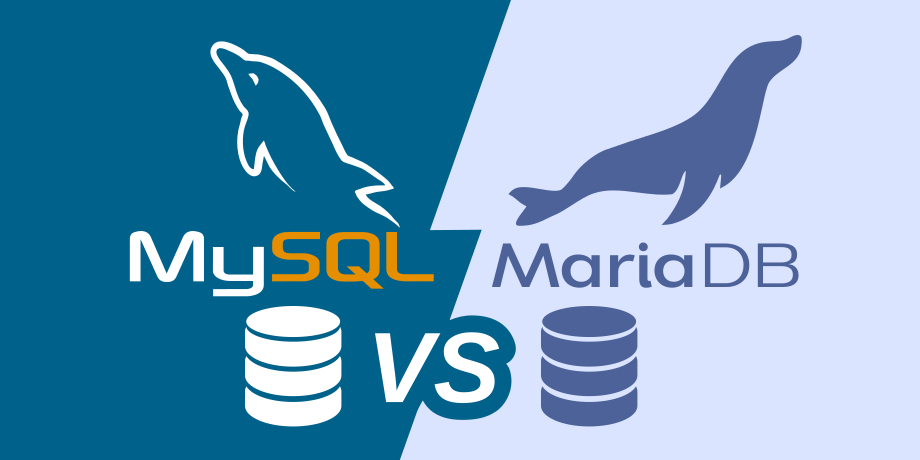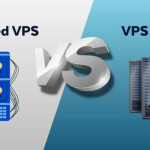In the realm of website development, a database plays a crucial role in the storage and management of data, with MySQL and MariaDB standing out as two widely used options.
While sharing a comparable structure, these two relational database management systems boast distinct features and elements.
Determining the ideal fit for your requirements will enhance your web application’s efficiency. This article delves into a comparison of and MariaDB, shedding light on the pros and cons of each database. By the conclusion, you’ll be equipped with the knowledge to identify the most suitable database for your needs.

Table of Contents
What Is MySQL?
Developed by MySQL AB for web application development, MySQL stands as an open-source relational database management system. It offers a user-friendly environment for web developers to efficiently handle data through tables.
Typically, MySQL collaborates seamlessly with PHP, Apache web servers, and various Linux distributions. Its adaptability extends to modifications using the Structured Query Language (SQL).
The ascent of MySQL’s popularity gained significant momentum when WordPress incorporated it into its system. Notably, its compatibility with Linux is reflected in its inclusion with distributions like Ubuntu.
What Is MariaDB?
MariaDB emerged as a fork of MySQL, with its developers intentionally preserving the structure and features of the original relational database management system (RDBMS). This initiative stemmed from concerns that Oracle’s acquisition of MySQL, a move by the corporation behind the Oracle Database could pose risks to the database’s integrity.
To ensure seamless transition for MySQL users, MariaDB’s developers prioritize compatibility with each corresponding MySQL version. Beyond adopting MySQL’s data and table definition files, MariaDB also incorporates identical client protocols, client APIs, ports, and sockets. The overarching objective is to facilitate a hassle-free switch from MySQL to MariaDB.
Similar to MySQL, MariaDB is customizable using SQL statements.
Distinguishing Features Between MySQL and MariaDB
While MySQL and MariaDB share a similar structure and functionality, several notable differences set them apart.
Both MySQL and MariaDB serve as relational database management systems. Notably, MariaDB remains entirely open-source, while MySQL has incorporated closed-source modules in addition to its open-source version.
In terms of performance, MariaDB is often lauded for its superior speed and efficiency compared to MySQL. MariaDB achieves this through the utilization of 12 new storage engines and the ability to handle over 200,000 connections.
After Oracle’s acquisition, MySQL adopted a dual licensing model, offering both open-source and commercial licenses. In contrast, MariaDB adheres strictly to the GNU General Public License (GPL), maintaining a commitment to open-source principles.
The Enterprise Edition provides thread pooling capability supporting up to 200,000 connections, enhancing system stability and performance. However, this feature is absent in the Community Edition, which supports only a limited static number of threads. On the contrary, MariaDB has improved thread pooling in all versions, supporting more than 200,000 connections, crucial for high transaction processing in platforms like eCommerce.
Functionality-wise, it introduces features like sys schema objects, super read-only function, data masking, and dynamic columns. In contrast, MariaDB supports features such as invisible columns and database views, offering different advantages in terms of data visibility and query management.
Regarding database engines, MariaDB boasts a broader range of options compared to it including XtraDB, Memory Storage Engine, MariaDB ColumnsStore, Aria, Cassandra Storage Engine, and Connect.
It supports a native JSON data type, SHA-2 authentication plugin, and the validate_password plugin by default, which MariaDB lacks.
Lastly, organizational management diverges between MySQL and MariaDB. Oracle Corporation manages it, controlling the development and documentation process. While it encourages community engagement, the degree of community influence may differ from fully open-source counterparts. MariaDB, being community-driven, is managed by the MariaDB Foundation, allowing open-source communities to actively participate in development and documentation decisions through a transparent process.
MariaDB vs MySQL: A Thorough Comparative Analysis
In the ensuing sections, we will delve into a comprehensive comparison of the performance and compatibility between MySQL and MariaDB.
Performance and Benchmarks
Given the similar functionalities of MySQL and MariaDB, several performance and benchmark tests were conducted to ascertain their relative strengths.
Dimitri Kravtchuk’s performance and UTF8 impact test revealed that MySQL 8.0 surpasses MariaDB 10.3 in handling a higher number of queries per second.
Similarly, the Minerva DB performance and benchmark test, focusing on InnoDB and MyRocks (running on MariaDB version 10.3.7), demonstrated that InnoDB outperforms MyRocks in managing queries per second.
In the context of commodity hardware, Axel Schwenke’s findings indicate that MariaDB 10.1 exhibits superior performance compared to it version 5.7.9.
It’s crucial to note that performance and benchmarking results depend on various factors, including specific SQL queries, the number of users and connections, and diverse use cases.
Compatibility
As MariaDB is developed as a full binary drop-in replacement for it. it boasts compatibility with its predecessor in numerous aspects.
Maintaining its naming conventions, structure, and data definition files, MariaDB ensures a seamless transition. Additionally, MariaDB supports all this connections, connectors, and ports, ensuring compatibility at various levels. The client package remains unchanged when interacting with MariaDB.
Switching from it to MariaDB follows a standard installation procedure. Utilizing the upgrade tool facilitates the update of it database privileges and event tables to align with their MariaDB counterparts.
Pros and Cons of MariaDB
Now that you have insights into the distinctions between MariaDB and MySQL, let’s explore the merits and drawbacks of these two database systems.
Pros:
- Backward Compatibility: A notable advantage of MariaDB is its backward compatibility, ensuring that the latest version remains compatible with older ones. This feature is crucial for an open-source software continually updated by the community.
- Dynamic Thread Pool: MariaDB boasts a dynamic thread pool, allowing the server to optimize resources by retiring inactive threads. This, coupled with a substantial connection pool, contributes to significantly improved speed, enhanced replication, and faster updates.
- Advanced Galera Cluster Technology: The built-in Galera cluster technology in MariaDB eliminates slave lag and lost transactions, reduces client latencies, and enhances node read scalability.
- Support for Multiple Storage Engines: MariaDB supports more storage engines than it each designed for specific purposes. For instance, MariaDB ColumnStore is tailored for big data scaling and linear scalability.
- Open Source under GPL License: MariaDB is distributed under the GPL license, providing users with full access to all features upon installation, and the software is available for free.
Cons:
- Limited JSON Support: MariaDB only supports JSON data types from version 10.2 onwards, and even then, it functions as an alias for LONGTEXT for compatibility reasons. Transitioning from the to MariaDB may require altering the JSON column type.
- Absence of Some MySQL Enterprise Edition Features: Certain features exclusive to the Enterprise Edition are not available in MariaDB. However, MariaDB offers alternative open-source plugins, such as MaxScale for data masking, as part of its enterprise database solution.
- Support Discrepancies: While expert support and enterprise-grade features are accessible through a purchased MariaDB Platform subscription, users relying on the community-developed version, MariaDB Community, must turn to the knowledge base and forums for technical support.
Pros and Cons of MySQL
Let’s explore the advantages and drawbacks of it in comparison to MariaDB.
Pros:
- Built-in Data Masking and Dynamic Columns: MySQL offers robust data security with built-in data masking and dynamic columns, contributing to a secure and swift database system.
- Simple Design and Multiple Storage Engines: With a straightforward design and support for multiple storage engines, it ensures optimal performance and continuous uptime.
- Versatility for Different Use Cases: Excelling in data management for web applications, it is adaptable to various use cases. It proves suitable for eCommerce platforms with robust transactional support and advanced data security features.
- Excellent Compatibility and Platform Independence: Backed by the Oracle Corporation, it enjoys excellent compatibility, supporting over 20 operating systems and being platform independent. Regular updates and comprehensive documentation further enhance its reliability.
- User-Friendly and Customizable: it is user-friendly and customizable, offering multiple user interfaces to cater to different preferences.
Cons:
- Complex Migration from MariaDB: Migrating from MariaDB to is more challenging due to replication configuration differences, posing a hurdle for users.
- Incompatibility with Oracle Database: MySQL lacks compatibility with the Oracle database, primarily because it does not support PL/SQL, an application-oriented language developed by Oracle. In contrast, MariaDB offers Oracle PL/SQL compatibility starting from version 10.3.
- Limitations in Managing Large-sized Data: MySQL is not well-suited for managing large-sized data, lacking a robust memory-focused search engine and a large-scale data processing solution.
- Dual Licensing Model Restrictions: MySQL’s dual licensing model restricts access to essential features like the thread pool plugin behind a paywall.
- Challenges in Scalability: Restrictions and monetization policies implemented by Oracle make scaling MySQL challenging. Despite being open-source, Oracle maintains full control over the database system’s development and patches.
Choosing Between MariaDB and MySQL: A Decision Guide
When faced with the choice between MariaDB and MySQL, both database management systems boasting compelling features, the decision hinges on aligning your needs with their offerings.
MySQL:
Backed by the Oracle Corporation, it stands out as an excellent choice for those seeking consistent improvements, regular updates, and round-the-clock enterprise-level support. The Enterprise Edition, priced at $5,000/year, delivers top-tier scalability, reliability, and security. It is an ideal solution for businesses prioritizing these aspects.
For a more budget-friendly option, it’s Community Edition is versatile enough to cater to a wide array of projects across popular platforms and operating systems. Many open-source developers gravitate towards it, recognizing it as one of the premier database systems in the market.
MariaDB:
Years of refinement have elevated MariaDB to a position where it rivals its predecessor. The open-source community surrounding MariaDB continually introduces new features, enhancing database management and SQL query execution. If speedier development cycles are a priority, MariaDB is worth considering.
For instance, Hostinger utilizes the MariaDB database server across its Shared, Cloud, and WordPress hosting plans, showcasing its viability in real-world hosting environments. You can verify the installed version of MariaDB through the hPanel.
In essence, both MariaDB and MySQL, as the leading relational database management systems, have their distinct advantages and drawbacks. Before making a decision, carefully review these factors and assess your specific needs.
We trust this article has provided valuable insights into the differences between MariaDB and MySQL, aiding you in making an informed decision that aligns with your requirements. Best of luck in your choice!



